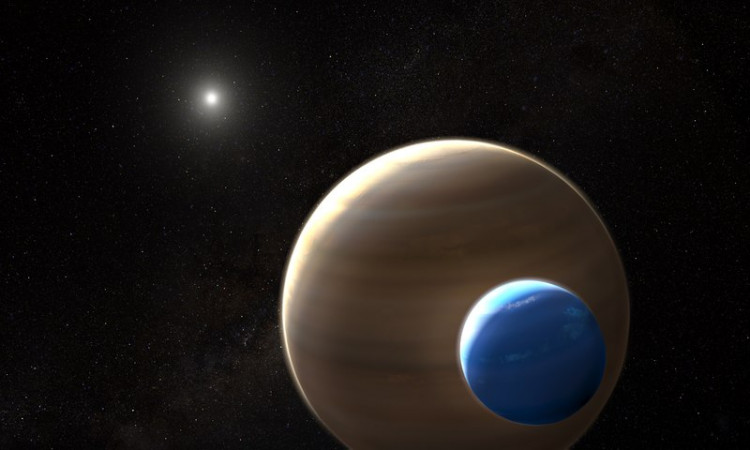Astronomers have revealed the likely discovery of an exomoon, or moon, in a star system other than our own, the second such candidate observation to date.
The signal comes from a star examined by NASA's now-retired Kepler space telescope, and the scientists behind the current study claim that their analysis leads to a mini-Neptune moon around a Jupiter-sized planet. If the strange signal turns out to be an exomoon, scientists will have a better knowledge of not only this solar system, but of how such systems work throughout the galaxy in general.
The satellite, named Kepler 1708 b i, has a radius of about 2.6 times Earth's and orbits a Jupiter-sized exoplanet that circles its parent star around once every two Earth years, according to the study. That sunlike star lies about 5,700 light-years from Earth.
The scientists sifted through a database of over 4,000 exoplanets found by NASA's now-retired Kepler satellite telescope to find this nugget. The scientists focused on a sample of 70 exoplanets because big planets circling far from their parent star are more likely to have moons large enough to be spotted.
These planets range in size from half to twice the size of Jupiter. They all take more than 400 Earth days to orbit its star or have an estimated average surface temperature of less than 300 kelvins (about 27° Celsius), which is somewhat higher than Earth's.
Following additional screening, which included excluding exoplanets with non-near-circular orbits (which are statistically less likely to harbor moons), the team uncovered a strong candidate for an exomoon. When it moved across the face of the parent star, it, like its host planet, caused detectable dimming of the star's light.
Much skepticism has been expressed about Kepler 1625 b, the discovery of the first potential exomoon. The scientists stated that both proposed exomoons need to be validated by additional observations by other instruments, such as the recently launched James Webb Space Telescope.
Both candidate exomoons are larger than any moon in our solar system.
New observations, however, will have to wait: the newest exomoon candidate and its planet will not pass in front of the parent star again until Mar. 24, 2023, according to the researchers.
Understanding how moons form, whether they can support life, and whether they play a role in planets' potential habitability could lead to a better understanding of how planetary systems form and evolve.
The new research is described in a paper published Thursday in the journal Nature Astronomy.




